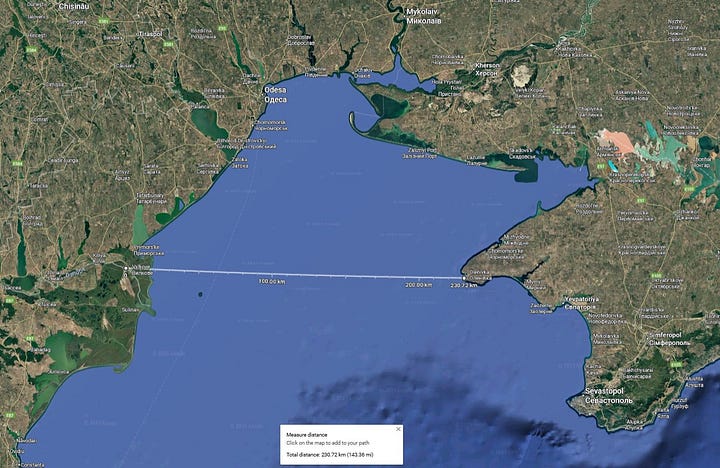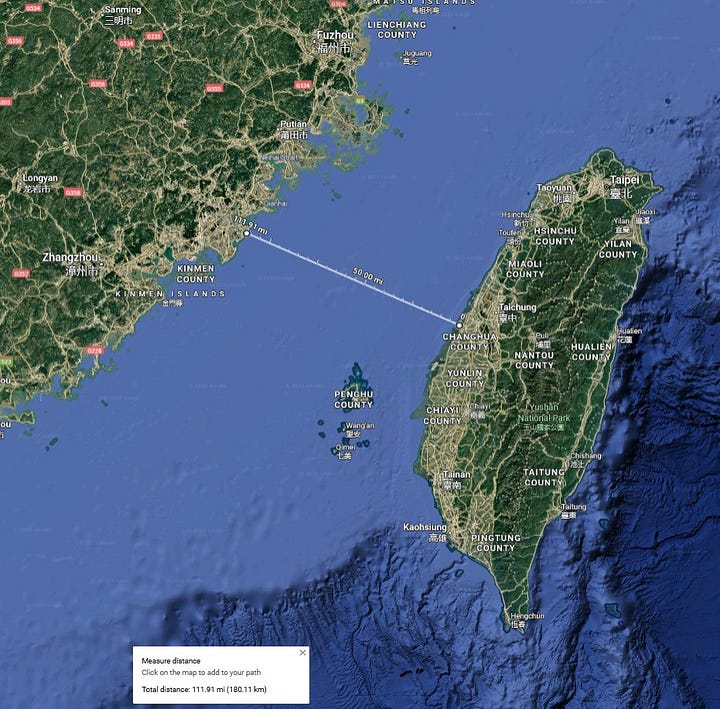Note: The following text was originally posted on my X/Twitter account.


One of the more interesting aspects of Russia's successful targeting of the Ukrainian naval ship in the Danube delta with a single-use armed USV is that a Russian fixed-wing ISR drone appears to have been used to monitor the attack. The attack took place some 230 kilometers from Crimea (and some 185 kilometers from the Dnieper-Bug estuary). The Russian ISR drone was either equipped with a beyond line of sight satellite communications datalink or was operating at such a great distance with the support of an aerial relay/radio relay flying over the Black Sea (the use of Ukraine's mobile phone network and/or Starlink over Ukrainian-controlled territory is also a possibility). It is worth noting that the Taiwan Strait is some 160-180 kilometers wide.
While we now know of the first confirmed Russian attack on a Ukrainian naval vessel using a USV, this is not the first Russian attack against Ukraine involving a USV. In February 2023, Russia used a USV to attack the critically important Zatoka bridge (video 3). Although several Russian USV designs have been publicly documented, the Russian military has so far displayed limited enthusiasm in using USVs against Ukraine. While this is likely to reflect, in no small part, a technical barrier to entry imposed by the non-availability/highly restricted availability of a low-latency, high-bandwidth proliferated low Earth orbit (LEO) satellite communication (SATCOM) system such as Starlink (for which there is no Russian substitute), the applications of armed USVs for Russia against Ukraine are far more limited than the applications are for Ukraine against Russia.
Ukraine doesn't really have a surface fleet to speak of that can contest the Russian Black Sea Fleet at sea. There are, as such, few Ukrainian vessels for armed Russian USVs to hunt. While Russia can use armed USVs to target merchant ships transiting to and from Ukrainian ports, counter-shipping operations have been a diplomatic minefield for Russia, and the availability of armed USVs will not change that. It is important to note that Russian decision-makers have (so far) actively decided against the open-ended and essentially unrestricted targeting of merchant ships travelling to/from Ukrainian ports in the Black Sea—this is not an undertaking for which Russia lacks capabilities, even accounting for the capabilities expended and lost over the course of the war. Russia has hardly made use of its ground-launched, ship-launched, air-launched, and submarine-launched anti-ship munitions (including torpedoes) for the purpose of putting a halt to all maritime traffic to and from Ukrainian ports. Armed USVs will, as such, offer Russia another means of targeting Ukrainian naval ships and merchant ships—and a less expensive means at that—but do not correct for a capability gap. The Russia-Ukraine naval balance in the Black Sea is so lopsided—so asymmetrical—that Ukraine has been able to disproportionately benefit from the pairing of USV technology—which was neither new nor particularly innovative in 2022—and LEO SATCOM in the form of Starlink.
While the Russian military has to date displayed limited enthusiasm for USVs in the context of the Russia-Ukraine War, it has displayed greater enthusiasm in employing USVs and UUVs in the Baltic Sea. Moreover, Russia's Rubicon Center is reportedly working on USVs that emulate how Ukraine's USV designs and modes of employment evolved once there were few lucrative naval targets remaining in the Russian Black Sea Fleet that could/would put out to sea. This notably includes the use of USVs to launch both fixed-wing drones and multirotor drones to attack targets on land. Supposing that the Rubicon Center was involved in the targeting of the Ukrainian naval vessel in the Danube delta, we may have just witnessed a successful demonstration of the viability of the all-critical navigation and communication systems used on Russian USVs. Russia may now apply its USVs to multiple possible uses against targets along Ukraine's coastline, even in the absence of many Ukrainian warships to target, and even in a context in which Russian decision-makers decide against an open-ended and essentially unrestricted campaign against merchant ships travelling to/from Ukrainian ports.

